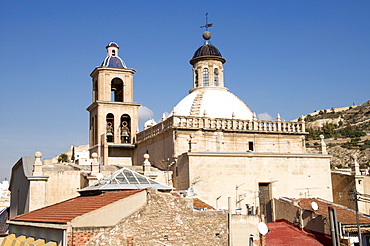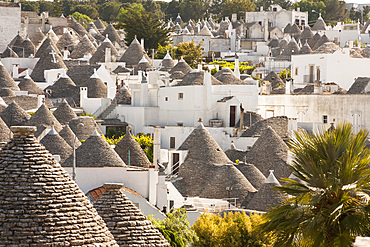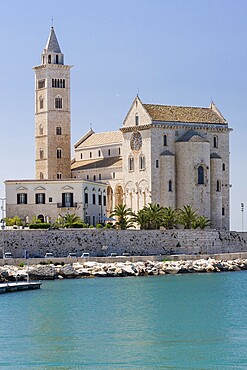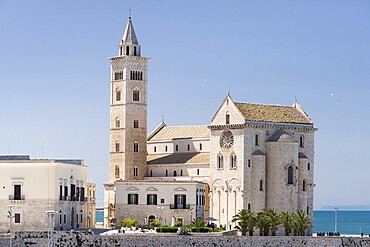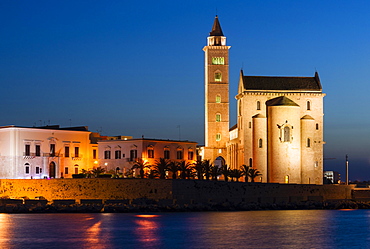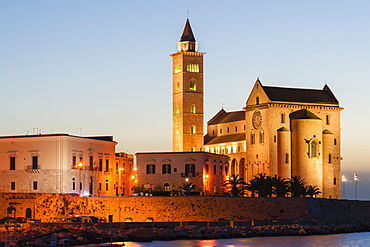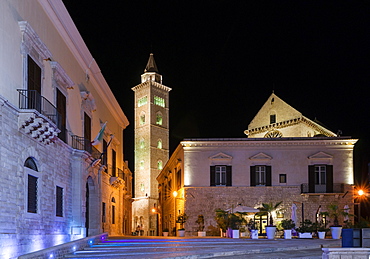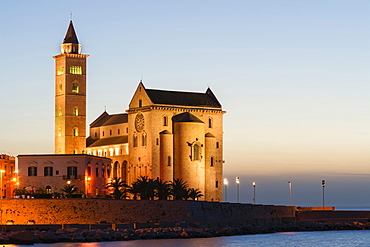Results
30 results found
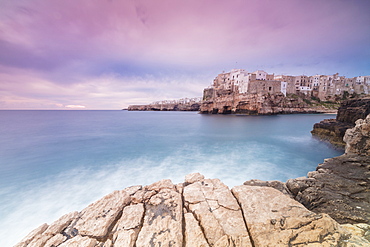
Pink sunrise on the turquoise sea framed by old town perched on the rocks, Polignano a Mare, Province of Bari, Apulia, Italy, Europe
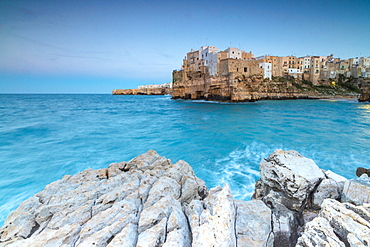
Turquoise sea at dusk framed by the old town perched on the rocks, Polignano a Mare, Province of Bari, Apulia, Italy, Europe
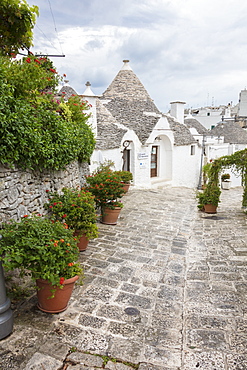
The typical Trulli built with dry stone with a conical roof, Alberobello, UNESCO World Heritage Site, Province of Bari, Apulia, Italy, Europe
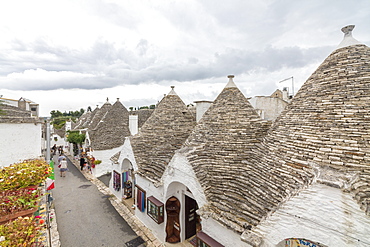
The typical huts called Trulli built with dry stone with a conical roof, Alberobello, UNESCO World Heritage Site, Province of Bari, Apulia, Italy, Europe
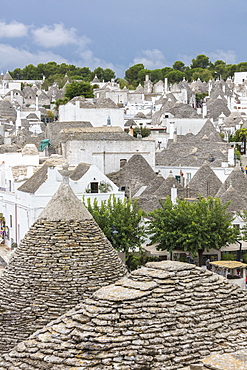
View of the typical Trulli built with dry stone with a conical roof, Alberobello, UNESCO World Heritage Site, Province of Bari, Apulia, Italy, Europe

Pink sunrise on the turquoise sea framed by old town perched on the rocks, Polignano a Mare, Province of Bari, Apulia, Italy, Europe

Turquoise sea at sunset framed by the old town perched on the rocks, Polignano a Mare, Province of Bari, Apulia, Italy, Europe
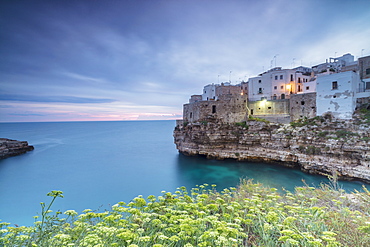
Turquoise sea at sunrise framed by the old town perched on the rocks, Polignano a Mare, Province of Bari, Apulia, Italy, Europe
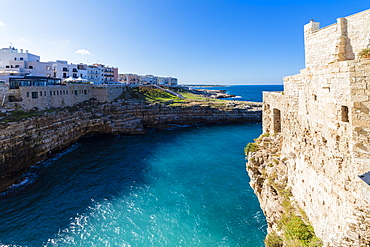
Turquoise sea framed by the old town perched on the rocks, Polignano a Mare, Province of Bari, Apulia, Italy, Europe
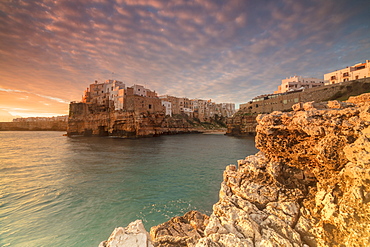
Pink sunrise on the turquoise sea framed by old town perched on the rocks, Polignano a Mare, Province of Bari, Apulia, Italy, Europe

Turquoise sea framed by the old town perched on the rocks, Polignano a Mare, Province of Bari, Apulia, Italy, Europe

Turquoise sea at sunrise framed by the old town perched on the rocks, Polignano a Mare, Province of Bari, Apulia, Italy, Europe
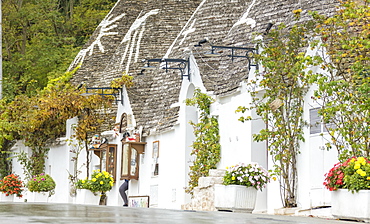
The traditional huts called Trulli built with dry stone with a conical roof, Alberobello, UNESCO World Heritage Site, Province of Bari, Apulia, Italy, Europe
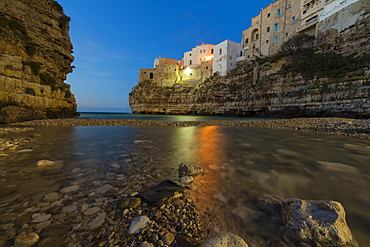
Dusk lights on the clear sea framed by the old town perched on the rocks, Polignano a Mare, Province of Bari, Apulia, Italy, Europe
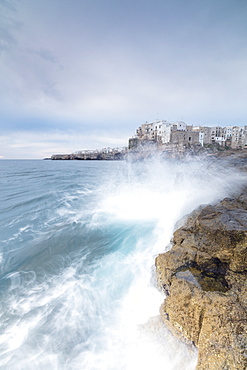
Waves of turquoise sea crashing on cliffs framed by the old town, Polignano a Mare, Province of Bari, Apulia, Italy, Europe

Sunrise on the turquoise sea framed by old town perched on the rocks, Polignano a Mare, Province of Bari, Apulia, Italy, Europe

Conical dry stone roofs on trulli, traditonal houses in Alberobello, UNESCO World Heritage Site, Bari Province, Puglia, Italy, Europe

Conical dry stone roofs on traditioanl houses in Alberobello, UNESCO World Heritage Site, Bari Province, Puglia, Italy, Europe
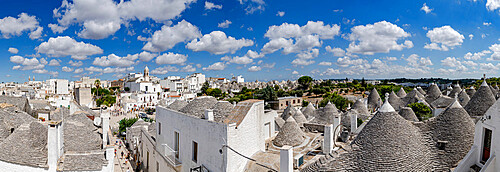
Trulli traditional stone huts and Itria Valley in summer, Alberobello, UNESCO World Heritage Site, province of Bari, Apulia, Italy, Europe
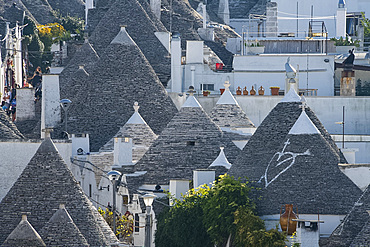
Conical dry stone roofs on trulli, traditonal houses in Alberobello, UNESCO World Heritage Site, Bari Province, Puglia, Italy, Europe
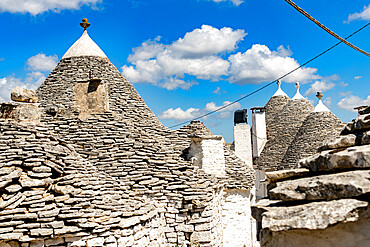
Details of the conical stone roofs of Trulli traditional houses, Alberobello, UNESCO World Heritage Site, province of Bari, Apulia, Italy, Europe
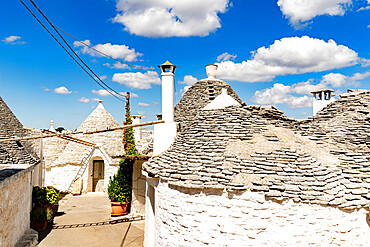
Traditional whitewashed Trulli houses, Alberobello, UNESCO World Heritage Site, province of Bari, Apulia, Italy, Europe
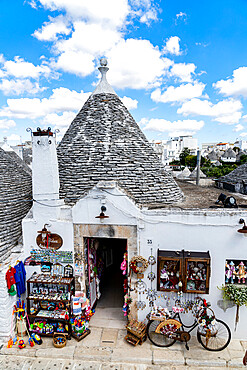
Handcraft souvenirs in the Trullo traditional stone hut, Alberobello, UNESCO World Heritage Site, province of Bari, Apulia, Italy, Europe

Sail boat anchored in the water off the white village of Polignano a Mare at sunset, Bari province, Adriatic Sea, Mediterranean Sea, Apulia, Italy, Europe
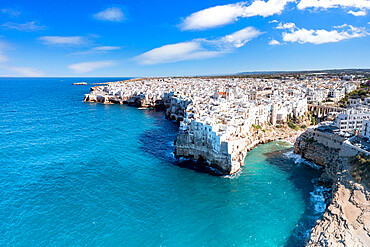
Aerial view of crystal sea surrounding Polignano a Mare on cliffs, province of Bari, Apulia, Italy, Europe

Aerial view of the sea town Polignano a Mare perched on cliffs, province of Bari, Apulia, Italy, Europe

The white buildings on top of the cliff of the fishing village of Polignano a Mare, Bari province, Apulia, Italy, Europe
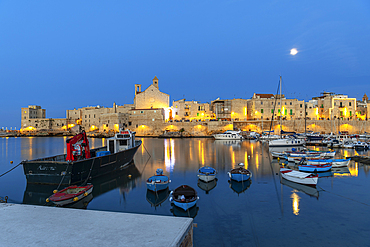
Full moon night over the illuminated medieval village of Giovinazzo with tourist marina in the foreground, Bari province, Adriatic Sea, Mediterranean Sea, Apulia, Italy, Europe
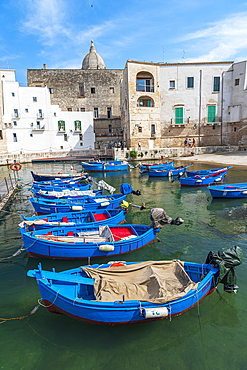
Rows of blue wooden boats in the water of the harbour of Monopoli old town, Monopoli, Bari province, Apulia, Italy, Europe
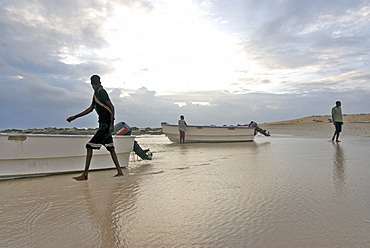
Hardest hit was a 650 kilometers stretch of the somali coastline between garacad (mudung region) and xaafuun (bari region), which forms part of the puntland province near the horn of africa. The tsunami resulted in the death of some 300 people and extensive destruction of shelters, houses and water sources as well as fishing gear. The livelihoods of many people residing in towns and small villages along the somali indian ocean coastline, particularly in the northern regions, were devastated
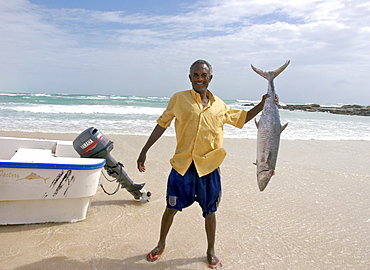
Hardest hit was a 650 kilometers stretch of the somali coastline between garacad (mudung region) and xaafuun (bari region), which forms part of the puntland province near the horn of africa. The tsunami resulted in the death of some 300 people and extensive destruction of shelters, houses and water sources as well as fishing gear. The livelihoods of many people residing in towns and small villages along the somali indian ocean coastline, particularly in the northern regions, were devastated
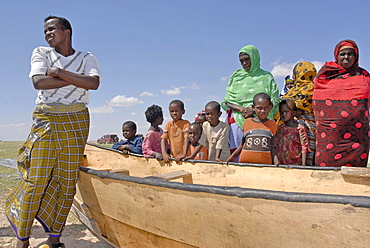
Hardest hit was a 650 kilometers stretch of the somali coastline between garacad (mudung region) and xaafuun (bari region), which forms part of the puntland province near the horn of africa. The tsunami resulted in the death of some 300 people and extensive destruction of shelters, houses and water sources as well as fishing gear. The livelihoods of many people residing in towns and small villages along the somali indian ocean coastline, particularly in the northern regions, were devastated

Hardest hit was a 650 kilometers stretch of the somali coastline between garacad (mudung region) and xaafuun (bari region), which forms part of the puntland province near the horn of africa. The tsunami resulted in the death of some 300 people and extensive destruction of shelters, houses and water sources as well as fishing gear. The livelihoods of many people residing in towns and small villages along the somali indian ocean coastline, particularly in the northern regions, were devastated
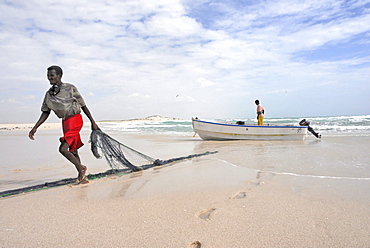
Hardest hit was a 650 kilometers stretch of the somali coastline between garacad (mudung region) and xaafuun (bari region), which forms part of the puntland province near the horn of africa. The tsunami resulted in the death of some 300 people and extensive destruction of shelters, houses and water sources as well as fishing gear. The livelihoods of many people residing in towns and small villages along the somali indian ocean coastline, particularly in the northern regions, were devastated
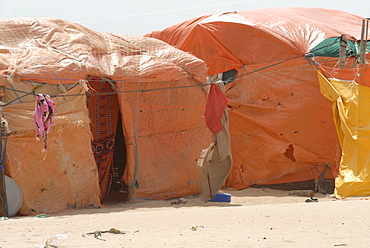
Hardest hit was a 650 kilometers stretch of the somali coastline between garacad (mudung region) and xaafuun (bari region), which forms part of the puntland province near the horn of africa. The tsunami resulted in the death of some 300 people and extensive destruction of shelters, houses and water sources as well as fishing gear. The livelihoods of many people residing in towns and small villages along the somali indian ocean coastline, particularly in the northern regions, were devastated

Hardest hit was a 650 kilometers stretch of the somali coastline between garacad (mudung region) and xaafuun (bari region), which forms part of the puntland province near the horn of africa. The tsunami resulted in the death of some 300 people and extensive destruction of shelters, houses and water sources as well as fishing gear. The livelihoods of many people residing in towns and small villages along the somali indian ocean coastline, particularly in the northern regions, were devastated

Hardest hit was a 650 kilometers stretch of the somali coastline between garacad (mudung region) and xaafuun (bari region), which forms part of the puntland province near the horn of africa. The tsunami resulted in the death of some 300 people and extensive destruction of shelters, houses and water sources as well as fishing gear. The livelihoods of many people residing in towns and small villages along the somali indian ocean coastline, particularly in the northern regions, were devastated
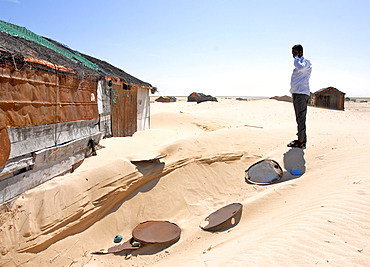
Hardest hit was a 650 kilometers stretch of the somali coastline between garacad (mudung region) and xaafuun (bari region), which forms part of the puntland province near the horn of africa. The tsunami resulted in the death of some 300 people and extensive destruction of shelters, houses and water sources as well as fishing gear. The livelihoods of many people residing in towns and small villages along the somali indian ocean coastline, particularly in the northern regions, were devastated

Hardest hit was a 650 kilometers stretch of the somali coastline between garacad (mudung region) and xaafuun (bari region), which forms part of the puntland province near the horn of africa. The tsunami resulted in the death of some 300 people and extensive destruction of shelters, houses and water sources as well as fishing gear. The livelihoods of many people residing in towns and small villages along the somali indian ocean coastline, particularly in the northern regions, were devastated

Hardest hit was a 650 kilometers stretch of the somali coastline between garacad (mudung region) and xaafuun (bari region), which forms part of the puntland province near the horn of africa. The tsunami resulted in the death of some 300 people and extensive destruction of shelters, houses and water sources as well as fishing gear. The livelihoods of many people residing in towns and small villages along the somali indian ocean coastline, particularly in the northern regions, were devastated

Hardest hit was a 650 kilometers stretch of the somali coastline between garacad (mudung region) and xaafuun (bari region), which forms part of the puntland province near the horn of africa. The tsunami resulted in the death of some 300 people and extensive destruction of shelters, houses and water sources as well as fishing gear. The livelihoods of many people residing in towns and small villages along the somali indian ocean coastline, particularly in the northern regions, were devastated
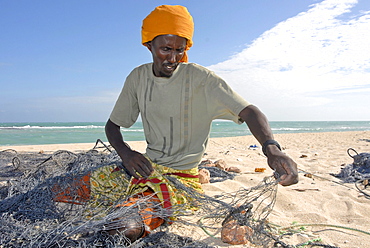
Hardest hit was a 650 kilometers stretch of the somali coastline between garacad (mudung region) and xaafuun (bari region), which forms part of the puntland province near the horn of africa. The tsunami resulted in the death of some 300 people and extensive destruction of shelters, houses and water sources as well as fishing gear. The livelihoods of many people residing in towns and small villages along the somali indian ocean coastline, particularly in the northern regions, were devastated
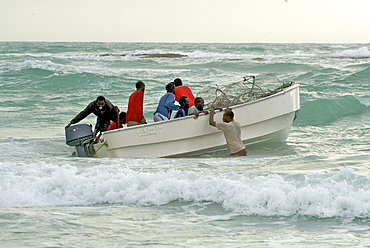
Hardest hit was a 650 kilometers stretch of the somali coastline between garacad (mudung region) and xaafuun (bari region), which forms part of the puntland province near the horn of africa. The tsunami resulted in the death of some 300 people and extensive destruction of shelters, houses and water sources as well as fishing gear. The livelihoods of many people residing in towns and small villages along the somali indian ocean coastline, particularly in the northern regions, were devastated
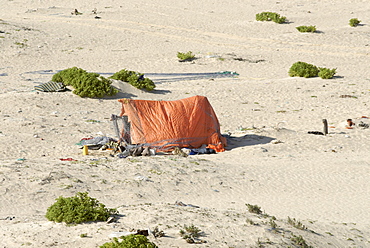
Hardest hit was a 650 kilometers stretch of the somali coastline between garacad (mudung region) and xaafuun (bari region), which forms part of the puntland province near the horn of africa. The tsunami resulted in the death of some 300 people and extensive destruction of shelters, houses and water sources as well as fishing gear. The livelihoods of many people residing in towns and small villages along the somali indian ocean coastline, particularly in the northern regions, were devastated

Hardest hit was a 650 kilometers stretch of the somali coastline between garacad (mudung region) and xaafuun (bari region), which forms part of the puntland province near the horn of africa. The tsunami resulted in the death of some 300 people and extensive destruction of shelters, houses and water sources as well as fishing gear. The livelihoods of many people residing in towns and small villages along the somali indian ocean coastline, particularly in the northern regions, were devastated
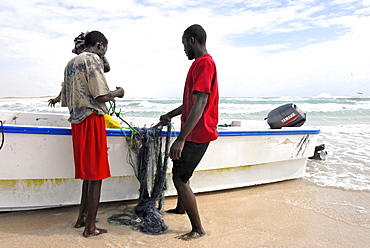
Hardest hit was a 650 kilometers stretch of the somali coastline between garacad (mudung region) and xaafuun (bari region), which forms part of the puntland province near the horn of africa. The tsunami resulted in the death of some 300 people and extensive destruction of shelters, houses and water sources as well as fishing gear. The livelihoods of many people residing in towns and small villages along the somali indian ocean coastline, particularly in the northern regions, were devastated

Hardest hit was a 650 kilometers stretch of the somali coastline between garacad (mudung region) and xaafuun (bari region), which forms part of the puntland province near the horn of africa. The tsunami resulted in the death of some 300 people and extensive destruction of shelters, houses and water sources as well as fishing gear. The livelihoods of many people residing in towns and small villages along the somali indian ocean coastline, particularly in the northern regions, were devastated
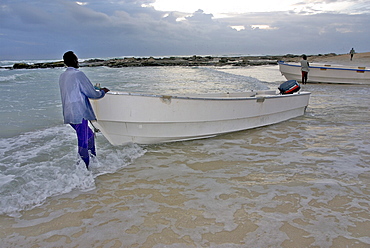
Hardest hit was a 650 kilometers stretch of the somali coastline between garacad (mudung region) and xaafuun (bari region), which forms part of the puntland province near the horn of africa. The tsunami resulted in the death of some 300 people and extensive destruction of shelters, houses and water sources as well as fishing gear. The livelihoods of many people residing in towns and small villages along the somali indian ocean coastline, particularly in the northern regions, were devastated

Hardest hit was a 650 kilometers stretch of the somali coastline between garacad (mudung region) and xaafuun (bari region), which forms part of the puntland province near the horn of africa. The tsunami resulted in the death of some 300 people and extensive destruction of shelters, houses and water sources as well as fishing gear. The livelihoods of many people residing in towns and small villages along the somali indian ocean coastline, particularly in the northern regions, were devastated
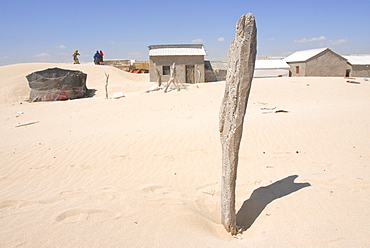
Hardest hit was a 650 kilometers stretch of the somali coastline between garacad (mudung region) and xaafuun (bari region), which forms part of the puntland province near the horn of africa. The tsunami resulted in the death of some 300 people and extensive destruction of shelters, houses and water sources as well as fishing gear. The livelihoods of many people residing in towns and small villages along the somali indian ocean coastline, particularly in the northern regions, were devastated
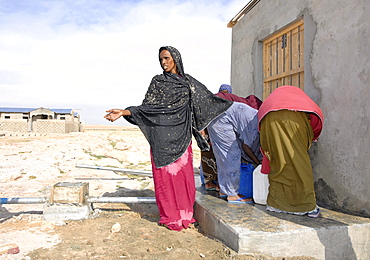
Hardest hit was a 650 kilometers stretch of the somali coastline between garacad (mudung region) and xaafuun (bari region), which forms part of the puntland province near the horn of africa. The tsunami resulted in the death of some 300 people and extensive destruction of shelters, houses and water sources as well as fishing gear. The livelihoods of many people residing in towns and small villages along the somali indian ocean coastline, particularly in the northern regions, were devastated

Hardest hit was a 650 kilometers stretch of the somali coastline between garacad (mudung region) and xaafuun (bari region), which forms part of the puntland province near the horn of africa. The tsunami resulted in the death of some 300 people and extensive destruction of shelters, houses and water sources as well as fishing gear. The livelihoods of many people residing in towns and small villages along the somali indian ocean coastline, particularly in the northern regions, were devastated
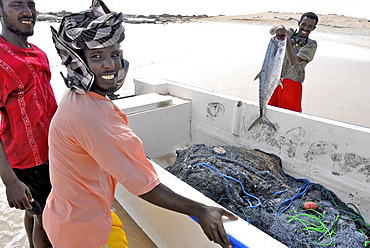
Hardest hit was a 650 kilometers stretch of the somali coastline between garacad (mudung region) and xaafuun (bari region), which forms part of the puntland province near the horn of africa. The tsunami resulted in the death of some 300 people and extensive destruction of shelters, houses and water sources as well as fishing gear. The livelihoods of many people residing in towns and small villages along the somali indian ocean coastline, particularly in the northern regions, were devastated
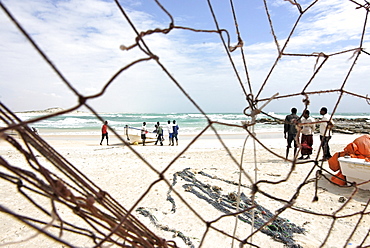
Hardest hit was a 650 kilometers stretch of the somali coastline between garacad (mudung region) and xaafuun (bari region), which forms part of the puntland province near the horn of africa. The tsunami resulted in the death of some 300 people and extensive destruction of shelters, houses and water sources as well as fishing gear. The livelihoods of many people residing in towns and small villages along the somali indian ocean coastline, particularly in the northern regions, were devastated

Hardest hit was a 650 kilometers stretch of the somali coastline between garacad (mudung region) and xaafuun (bari region), which forms part of the puntland province near the horn of africa. The tsunami resulted in the death of some 300 people and extensive destruction of shelters, houses and water sources as well as fishing gear. The livelihoods of many people residing in towns and small villages along the somali indian ocean coastline, particularly in the northern regions, were devastated

Hardest hit was a 650 kilometers stretch of the somali coastline between garacad (mudung region) and xaafuun (bari region), which forms part of the puntland province near the horn of africa. The tsunami resulted in the death of some 300 people and extensive destruction of shelters, houses and water sources as well as fishing gear. The livelihoods of many people residing in towns and small villages along the somali indian ocean coastline, particularly in the northern regions, were devastated
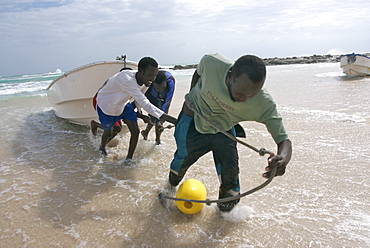
Hardest hit was a 650 kilometers stretch of the somali coastline between garacad (mudung region) and xaafuun (bari region), which forms part of the puntland province near the horn of africa. The tsunami resulted in the death of some 300 people and extensive destruction of shelters, houses and water sources as well as fishing gear. The livelihoods of many people residing in towns and small villages along the somali indian ocean coastline, particularly in the northern regions, were devastated
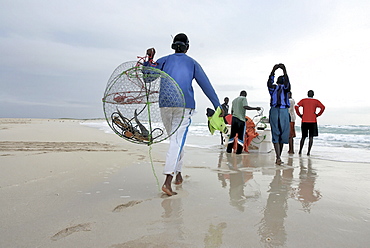
Hardest hit was a 650 kilometers stretch of the somali coastline between garacad (mudung region) and xaafuun (bari region), which forms part of the puntland province near the horn of africa. The tsunami resulted in the death of some 300 people and extensive destruction of shelters, houses and water sources as well as fishing gear. The livelihoods of many people residing in towns and small villages along the somali indian ocean coastline, particularly in the northern regions, were devastated

Hardest hit was a 650 kilometers stretch of the somali coastline between garacad (mudung region) and xaafuun (bari region), which forms part of the puntland province near the horn of africa. The tsunami resulted in the death of some 300 people and extensive destruction of shelters, houses and water sources as well as fishing gear. The livelihoods of many people residing in towns and small villages along the somali indian ocean coastline, particularly in the northern regions, were devastated

Hardest hit was a 650 kilometers stretch of the somali coastline between garacad (mudung region) and xaafuun (bari region), which forms part of the puntland province near the horn of africa. The tsunami resulted in the death of some 300 people and extensive destruction of shelters, houses and water sources as well as fishing gear. The livelihoods of many people residing in towns and small villages along the somali indian ocean coastline, particularly in the northern regions, were devastated
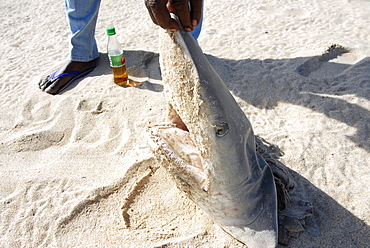
Hardest hit was a 650 kilometers stretch of the somali coastline between garacad (mudung region) and xaafuun (bari region), which forms part of the puntland province near the horn of africa. The tsunami resulted in the death of some 300 people and extensive destruction of shelters, houses and water sources as well as fishing gear. The livelihoods of many people residing in towns and small villages along the somali indian ocean coastline, particularly in the northern regions, were devastated., /shark fishing is main source of income for many of the somalis fishermen

Hardest hit was a 650 kilometers stretch of the somali coastline between garacad (mudung region) and xaafuun (bari region), which forms part of the puntland province near the horn of africa. The tsunami resulted in the death of some 300 people and extensive destruction of shelters, houses and water sources as well as fishing gear. The livelihoods of many people residing in towns and small villages along the somali indian ocean coastline, particularly in the northern regions, were devastated
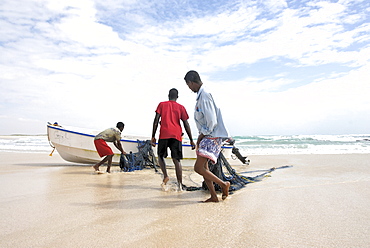
Hardest hit was a 650 kilometers stretch of the somali coastline between garacad (mudung region) and xaafuun (bari region), which forms part of the puntland province near the horn of africa. The tsunami resulted in the death of some 300 people and extensive destruction of shelters, houses and water sources as well as fishing gear. The livelihoods of many people residing in towns and small villages along the somali indian ocean coastline, particularly in the northern regions, were devastated

Hardest hit was a 650 kilometers stretch of the somali coastline between garacad (mudung region) and xaafuun (bari region), which forms part of the puntland province near the horn of africa. The tsunami resulted in the death of some 300 people and extensive destruction of shelters, houses and water sources as well as fishing gear. The livelihoods of many people residing in towns and small villages along the somali indian ocean coastline, particularly in the northern regions, were devastated
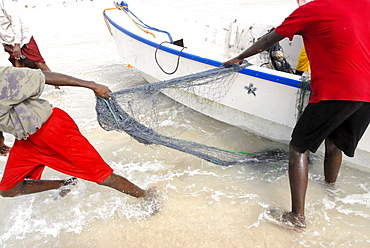
Hardest hit was a 650 kilometers stretch of the somali coastline between garacad (mudung region) and xaafuun (bari region), which forms part of the puntland province near the horn of africa. The tsunami resulted in the death of some 300 people and extensive destruction of shelters, houses and water sources as well as fishing gear. The livelihoods of many people residing in towns and small villages along the somali indian ocean coastline, particularly in the northern regions, were devastated

Hardest hit was a 650 kilometers stretch of the somali coastline between garacad (mudung region) and xaafuun (bari region), which forms part of the puntland province near the horn of africa. The tsunami resulted in the death of some 300 people and extensive destruction of shelters, houses and water sources as well as fishing gear. The livelihoods of many people residing in towns and small villages along the somali indian ocean coastline, particularly in the northern regions, were devastated
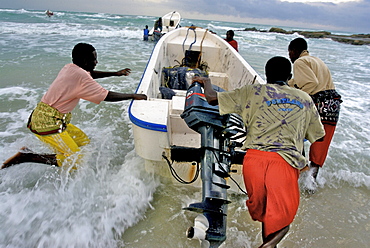
Hardest hit was a 650 kilometers stretch of the somali coastline between garacad (mudung region) and xaafuun (bari region), which forms part of the puntland province near the horn of africa. The tsunami resulted in the death of some 300 people and extensive destruction of shelters, houses and water sources as well as fishing gear. The livelihoods of many people residing in towns and small villages along the somali indian ocean coastline, particularly in the northern regions, were devastated
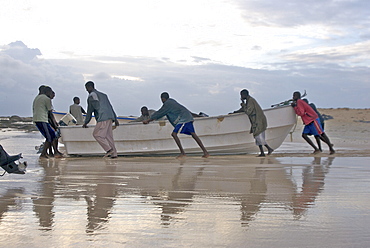
Hardest hit was a 650 kilometers stretch of the somali coastline between garacad (mudung region) and xaafuun (bari region), which forms part of the puntland province near the horn of africa. The tsunami resulted in the death of some 300 people and extensive destruction of shelters, houses and water sources as well as fishing gear. The livelihoods of many people residing in towns and small villages along the somali indian ocean coastline, particularly in the northern regions, were devastated
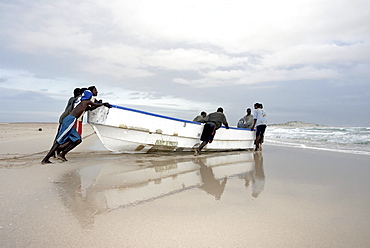
Hardest hit was a 650 kilometers stretch of the somali coastline between garacad (mudung region) and xaafuun (bari region), which forms part of the puntland province near the horn of africa. The tsunami resulted in the death of some 300 people and extensive destruction of shelters, houses and water sources as well as fishing gear. The livelihoods of many people residing in towns and small villages along the somali indian ocean coastline, particularly in the northern regions, were devastated
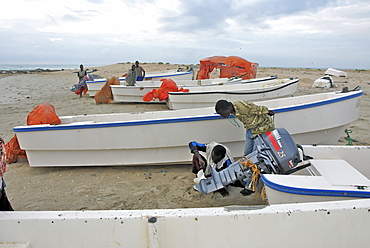
Hardest hit was a 650 kilometers stretch of the somali coastline between garacad (mudung region) and xaafuun (bari region), which forms part of the puntland province near the horn of africa. The tsunami resulted in the death of some 300 people and extensive destruction of shelters, houses and water sources as well as fishing gear. The livelihoods of many people residing in towns and small villages along the somali indian ocean coastline, particularly in the northern regions, were devastated
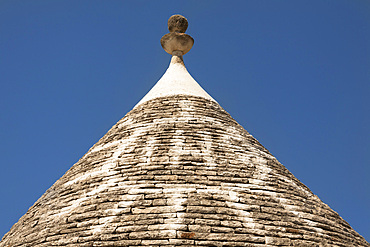
Conical dry stone roof of trulli house, with painted sun symbol, Alberobello, Bari province, Puglia region, Italy
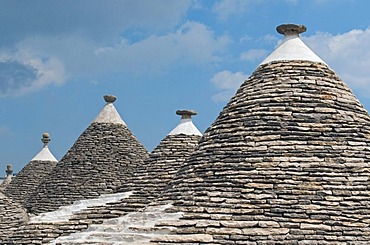
Group of Trulli, traditional Apulian stone dwellings with conical roofs and pinnacles, Alberobello, Bari province, Puglia region, Italy, Europe
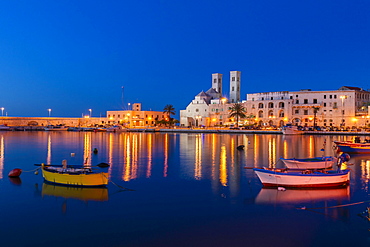
Blue Hour, dusk, fishing boats, harbour, historic centre, with the Romanesque Duomo Vecchio, old cathedral, San Corrado, Molfetta, Bari Province, Apulia, Italy, Europe
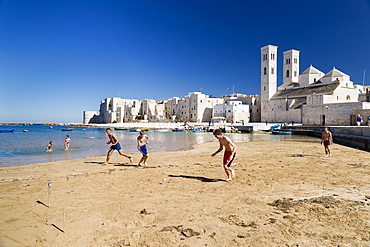
Teenagers playing football onthe beach, harbor, historic centre, Romanesque Old Cathedral, San Corrado and Torrione Passari, Molfetta, Bari Province, Apulia, Italy, Europe
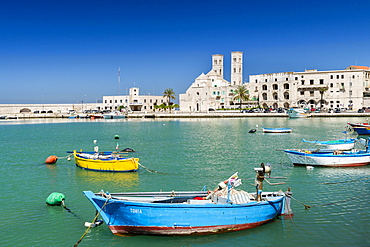
Fishing boats in the harbor, historic centre and Romanesque Old Cathedral, San Corrado, Molfetta, Bari Province, Apulia, Italy, Europe
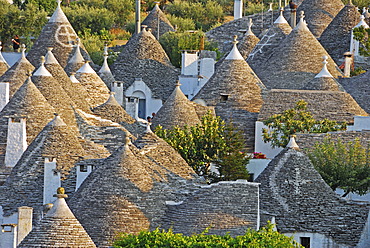
Trulli, round houses of Alberobello, UNESCO World Heritage Site, Valle d\'Itrea, Bari Province, Apulia, Southern Italy
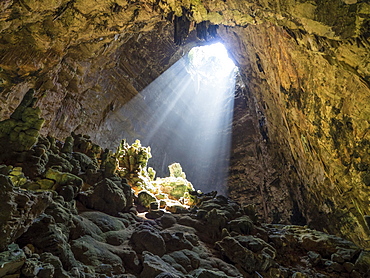
Light falling in the cave Grotte di Castellana, Castellana Grotte, Bari province, Apulia, Italy, Europe
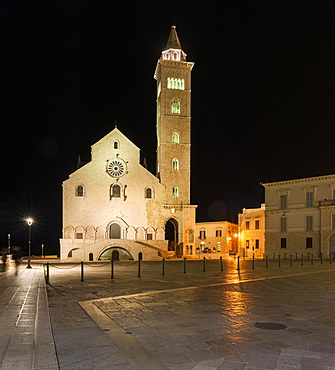
Night scene, west front, Romanesque Cathedral or Trani, 11th century, Trani, Bari, Apulia province, Italy, Europe

Trulli, round houses of Alberobello, UNESCO World Heritage Site, Valle d\'Itrea, Bari Province, Apulia, Southern Italy
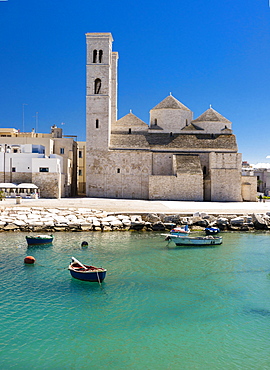
Fishing boats in the harbor, Romanesque Old Cathedral, San Corrado, Molfetta, Bari Province, Apulia, Italy, Europe


